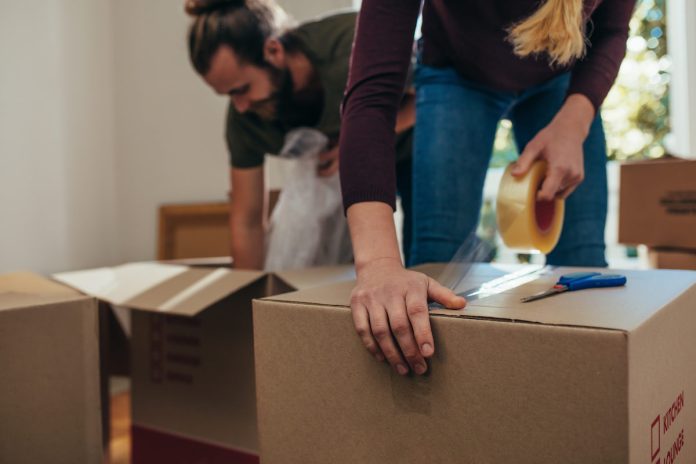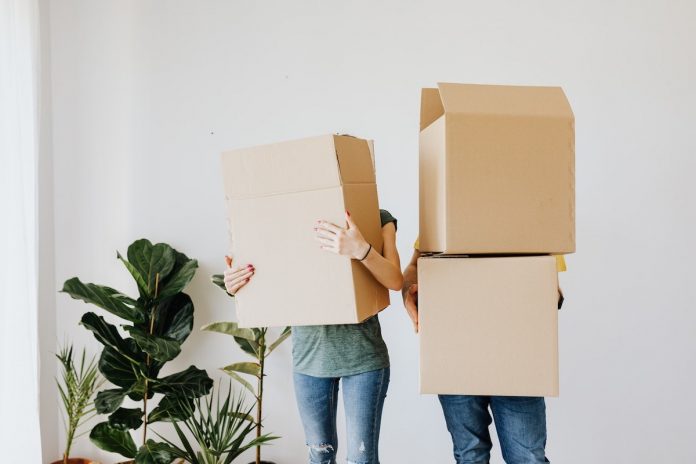9 Tips To Protect Your Household Items During A Long-Distance Move
Taking time to plan your long-distance move may carefully help you avoid any potential pitfalls along the way, especially if it’s your first time. Remember, there’s a difference between long-distance and local moves.
When it comes to long-distance moves, you should know where to find professional movers during the pre-moving process. This is because you need to carefully pack and organize your things to avoid inconvenience along the way and keep your items protected.
Fortunately, there are some ways to protect your household items during a long-distance move, and these include the following:
1. Get Moving Insurance
It may come in handy to buy extra coverage to save money on the move and protect your items completely from expensive damages. Buy moving insurance from the best company to avoid losing your belongings and money. Also, ensure that the insurer pays their claims.
2. Choose Your Mover Wisely
Never just hire anybody to take care of your precious household items. Choosing a trusted and reliable mover is a crucial tip to protect your household items during a long-distance move. Also, look for a licensed company to avoid scams and the challenges of moving out of state.
Moreover, professional long-distance movers must possess a license number from the authorized organization. Local moving companies, on the contrary, have licenses from the state. To verify whether or not a mover is licensed, check its license number online, and don’t forget to read its complaint history. Before hiring movers, ensure you get quotes from at least four different moving companies. Be sure all moving estimates are based on a video inspection or an in-person survey of your household.
Never take estimates from movers via online or phone. Instead, call for an in-house estimate. This way, you can negotiate with your movers to select the best.
3. Measure Your Items In Advance
One of the mistakes people make before a long-distance move is renting the biggest truck available in the market. In some cases, others may even try to cut their moving costs by renting the wrong moving truck. For instance, either the truck is very big, your items bounce around, or the truck isn’t packed properly, and there isn’t enough space for everything.
If you don’t want to end up choosing the wrong moving truck for your needs, estimate the measurements of all your items. This way, you can easily find the perfect moving truck size for the move. Finding a truck for your items shouldn’t be a concern if you’re working with a long-distance mover. It’s because professionals can determine which truck to use for your moving needs.
4. Organize Your Things When You Pack
To save time during a long-distance move, try to organize a box for your day-one items that you might need to use immediately as soon as you arrive at your new place. Depending on your needs, items may include everyday clothes, pans, pots, plates, and other things.
Grouping your fragile items may also come in handy. Also, keeping them together in your specialty boxes will help you determine which boxes require extra care.
5. Use The Perfect Boxes
Before you pack anything, always make sure you have the right boxes for the items you’re packing. If the movers pack your household items, the packing will never be a problem. Although you’re packing by yourself, you should use the right boxes for your items.
To find the best boxes, start with the measurements. For instance, although big boxes are a better option, packing your fragile and small items in a big box can be risky. Once you do this, some of your items may get damaged or break if heavier and large items are packed on top. You must pack small items in various small boxes and leave heavier and large items in bigger boxes.
Moreover, get boxes in various sizes and ensure they’re sturdy enough to protect your household items during a long-distance move. If you feel frugal and decide to use old or flimsy moving boxes in your house, you better think twice. Some boxes aren’t as sturdy as quality moving boxes and may fall apart during the relocation. To prevent damage to your items during a long-distance move, always opt for solid moving boxes, even if they may cost more.
6. Disassemble Bigger Items In Advance Of Your Move
You can save resources, transportation costs, and time by disassembling bigger items before loading them in your moving truck. Here are some of the items you can disassemble to make your moving process hassle-free:
- Shelves – The disassembly steps for shelves may depend on whether you have wooden shelves, wire shelves, or metal shelves.
- Tables – You may remove the tabletop from your table’s base to ease the moving process.
- Beds – For pack beddings and sheets in a bag or box, you may remove the rails and mattress from the bed frame.
7. Ensure You Have Enough Moving Blankets
Moving blankets offer great protection for your valuables like furniture as they cover the surface of your items. It also prevents them from sustaining damage when they’re being transported to your new house.
If you’re using moving services, they’ll likely have several blankets ready for your items. However, if you’re arranging your long-distance move, you can consider purchasing or renting moving blankets.
8. Never Forget Padding
You’ll surely require padding during a long-distance move, particularly your breakable and fragile items. Note that padding is crucial if the boxes aren’t filled up. Besides, you don’t want your items to slide around in a box as it may result in breakage.
Foam peanuts and bubble wrap are commonly used to keep your fragile items safe. In addition, you may apply tissue paper or plain newsprint to pack platters, bowls, plates, and some dishes.
On the other hand, you might want to use pillows, blankets, shirts, and comforters as alternatives if your budget is tight. Such things can provide the necessary cushioning for your fragile items in the boxes.
9. Consider Other Packing Strategies
Checking your household items are protected and safe during a long-distance move. Below are some of the packing strategies you may follow:
-
Label Carefully
Listing each box’s contents on external labels makes it easy for you and the movers to load and unload the moving truck. However, you must also handle every box with the necessary care. Additionally, you must mark the items appropriately with red stickers to ensure they can be quickly identified.
-
Use Original Cartons For Your Electronic Devices
Original containers are ideal when you’re moving and packing delicate electronics like televisions and computers. If you can’t get Styrofoam and original boxes, choose a box that’s a bit bigger than your content as you protect it with bubble wrap after and before storing each.
-
Wrap Fragile Furniture
Before loading your furniture into a moving truck, check if you’re able to protect its legs, casters, and surfaces that may get scratched. For example, you could use stretchable plastic or bubble wrap to protect them from any damage. Wrapping items such as wardrobes, dressers, or desks also helps to prevent doors and drawers from opening during the move.
-
Keep Your Mirrors And Paintings Safe
Your glass artwork may shift around in transit, so paste the masking tape in a cross-like pattern on the glass. This could prevent it from sliding and protect against injury if the glass breaks on the move. Afterward, use paper or bubble wrap to encase the framed pictures and mirrors. In addition, keep them in the frame box with cardboards placed between the framed pieces for better protection.
-
Never Overpack
Try putting no more than 50 pounds of the items in every box. You might not be able to do it with bigger appliances and belongings, but your loading and unloading experience will be smoothly and easily done. You may also pack heavier belongings like pillows and linens in bigger moving boxes and heavier items in small boxes.
-
Seal Every Box Carefully
Sealing a box incorrectly may lead to wasting money and time. Improper management of the box may lead it to burst or collapse during the move and cause more damage to the packed items. This could also be a stressful experience for you. Moreover, it’s essential to tape every box carefully as it can spell the difference between a smooth and safe relocation and a moving disaster.
When packing your boxes, wrap around the sides of heavy-moving boxes with tape and the areas where there’s more stress. If possible, tape the bottom of the boxes first before filling them with your items.
Bottom Line
Trying out the tips mentioned in this guide before your long-distance move can make a huge difference in keeping your household items well-protected. So, don’t hesitate to invest in quality packing materials. If you’re too busy with your daily schedule before your move, you can also opt for professional packers to care for your packing needs.







